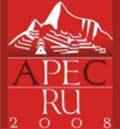United Kingdom
| Welcome |
| Peru in Brief |
| History |
| Geography |
| Government & Politics |
| Maritime delimitation between Peru and Chile |
| News |
Links |
ON THEIR KNOWLEDGE OF GEOMETRY, GEOGRAPHY, ARITHMETIC, AND MUSIC |
||
| On their knowledge of geometry, geography, arithmetic, and music | ||
"They had a good deal of knowledge of geometry, because it was necessary for them in measuring their lands, and for adjusting and settling the boundaries. But this was not done by measuring degrees, nor by any speculative method, but by their cords and small stones with which they boundaries. I will not relate what I knew concerning them, because I did not fully understand their practices. |
||
“With respect to geography, they understood very well how to paint and make models of each kingdom, and I have seen these models, with the towns and provinces depicted on them. I saw a model of Cuzco , with part of its province, and the four principal roads, made of clay and small stones and sticks. The model was according to scale, and showed the large and small squares, the streets, whether broad or narrow, the wards down to the most obscure houses, and the three streams which flow through the city. It was, indeed, a piece of work well worthy of admiration... |
||
"They knew a great deal of arithmetic, and had an admirable method by knots made on strings of different colours, of keeping an account of all the tributes in the kingdom of the Incas, both paid a due. They added up, and multiplied by these knots, and to know what portions referred to each village, they divided the strings by grains of maize or small stones, so that their calculation might be without confusion. As every subject, whether relating to peace or war, to vassals, tributes, flocks, laws, ceremonies, or any other department, had special accountants who studied their special branch of administration, the counting was performed with facility. For each item of an account was represented by knots or hanks, like loose leaves of a book; and, although an Indian (as chief accountant) may have had charge over two or three or more branches, the counting of each one was a department by itself... |
||
"In music they had acquired a knowledge of some tunes, which the Indians of the Collas district played on instruments made of hollow reeds, four or five being tied in a row, each one having the point higher than its neighbour, like an organ. These canes were fastened in fours, different one from another. One of them ran in high notes, and the others each higher in the scale; so that the four natural voices, treble, tenor, contralto, and counter-bass were represented by the four sets of reeds. When an Indian played on one of these pipes, another answered on a fifth or any other note; then another played another note, sometimes rising to the high notes, and at others going down, but always in tune. They did not understand accompaniments on different keys, but always played in one compass. The players were Indians instructed for the amusement of the king, and for the lords his vassals, and although their music was so simple, it was not generally practised, but was learnt and attained to by study. They had flutes with four or five notes, like those of shepherds; but they were not made on a scale, each one being of only one note. Their songs were composed in measured verses, and were for the most part written to celebrate amorous passions expressive now of joy now of sorrow, now of the kindness now of the cruelty of the fair..." |
||
| <BACK> |





